“Turning Red” conveys a simple and universal value with the help of cute images, and attempts to deeply explore the human feelings and ethics of the Chinese. Although it is simple, it is a comforting fable in the post-“globalization” era.
It tells us that the barriers of identity can finally be dissolved by understanding and love.
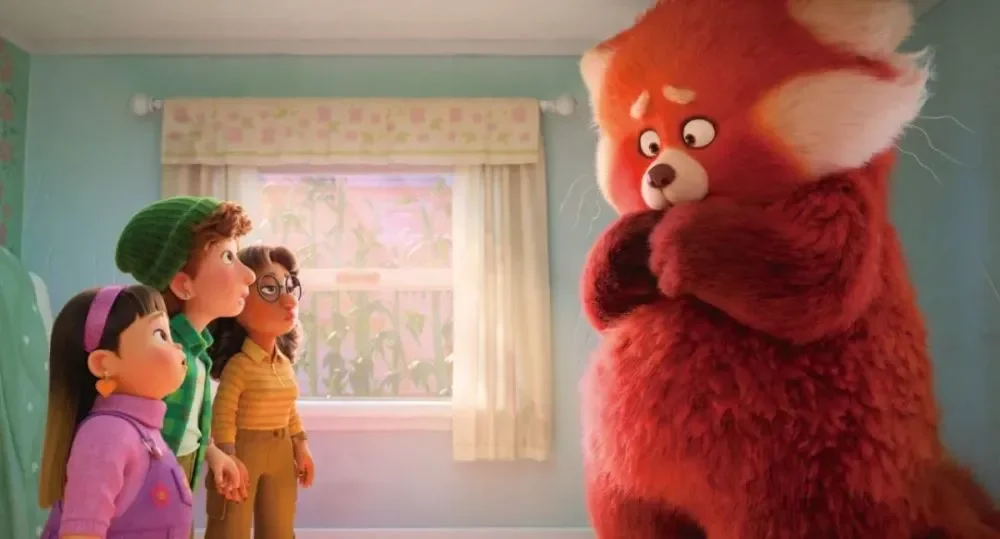
Since the Pixar animated film “Turning Red” launched on Disney+ in March, many viewers have been fascinated by the furry red panda.
“Turning Red” creator Domee Shi is a Chinese woman who won an Oscar for “Bao,” an animated short that explores Chinese-style parent-child relationships.
As Domee Shi’s feature debut, “Turning Red” is set in 2002, telling the story of Meilin, a Chinese-American girl living in Toronto, who wakes up and finds herself transformed into a red panda.
Related Post: Mother’s Day is coming, Pixar shares ‘Turning Red’ art picture.
In addition to adding a lot of Chinese cultural elements, the film is also full of nostalgia, making it easy for adult audiences to think of their adolescence after watching it.
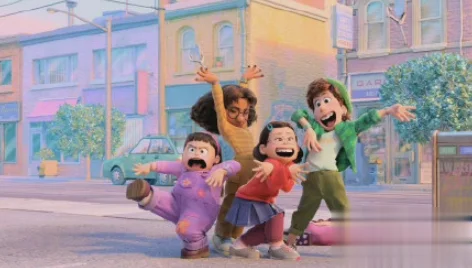
“Turning Red” isn’t the first American cartoon to feature Chinese elements. “Mulan” in 1998 and “Kung Fu Panda” in 2005 were both successful worldwide.
Unlike these two works, which show Chinese culture as a “spectacle”, “Turning Red” focuses on Chinese-style family relationships.
The whole film centers on the contradiction between Meilin and her mother, and in the interweaving of ethnic and gender issues, it tells a growing story that can almost serve as a model for cultural studies.
women’s growth story
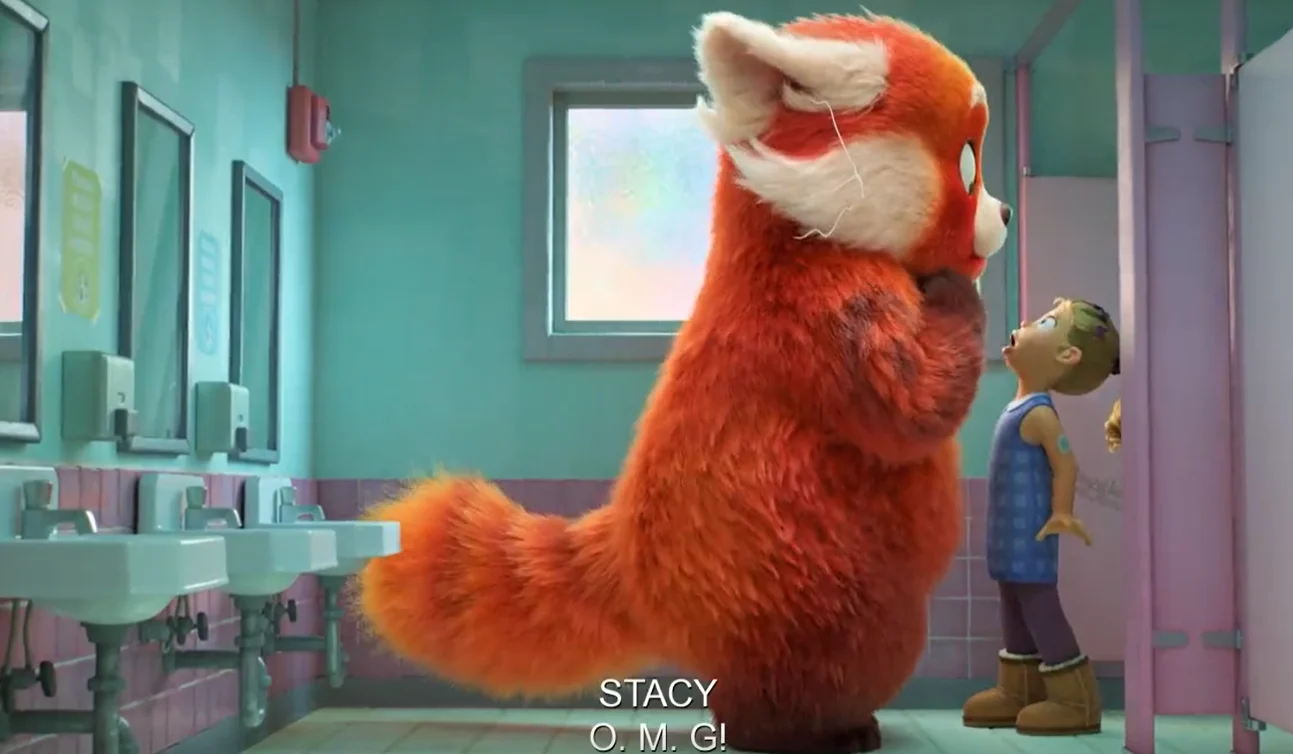
There is no doubt that “Turning Red” is an authentic growth film. Its English name “Turning Red” can be literally translated as “to become red”, which can be understood as Meilin will become a red panda at a certain age due to family inheritance, and also Can be understood as her menarche.
At the beginning of the film, Meilin introduces herself as a typical immigrant girl who demands the perfect immigrant family.
As the plot unfolds, we learn that behind the perfection, Meilin also has a rebellious side.
She and her three good sisters are fans of the boy group 4TOWN, and they dream of being able to watch their idol’s concert one day.
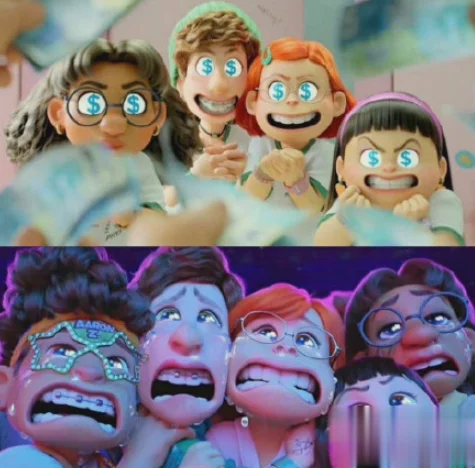
One day, Meilin accidentally discovered that she began to have a vague desire for boys, and she drew her fantasy. As a result, when she was seen by her mother, there was a lot of trouble, and Meilin felt that she had lost face…
Early the next morning, she turned into a red panda. What’s even more amazing is that this “alienation” came from the tradition of her mother’s family.
The 13-year-old Meilin’s peaceful life was shattered by sudden changes. She couldn’t accept the changes in her body and felt that she had become a beast. She was afraid that others would know, so she could only hide.
The mother initially thought that Meilin was “menarche”, and it was not until the discovery of the red panda that she had to reveal the family secret.
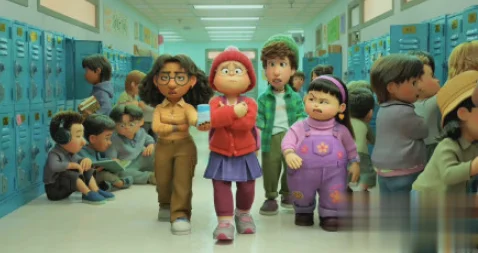
In the end, she did not forget to add: Meilin must attend the ritual on the full moon day and seal the “panda” in order to live a normal life.
The movie seems to be full of fantasy, but it actually reflects the real situation of many girls growing up.
After entering puberty, girls face physical and psychological changes, and cannot suppress their inner curiosity about sex.
This process is consistent with Meilin’s predicament, only the movie reinforces it with episodes like “Changing the Panda.”
Interestingly, the reason why the Meilin family has the tradition of “turning into a panda” is because the ancestor Sun Yee cultivated a spell to protect the clan after he had no male asylum. This kind of magic is passed on to women but not men, which has a very positive meaning.
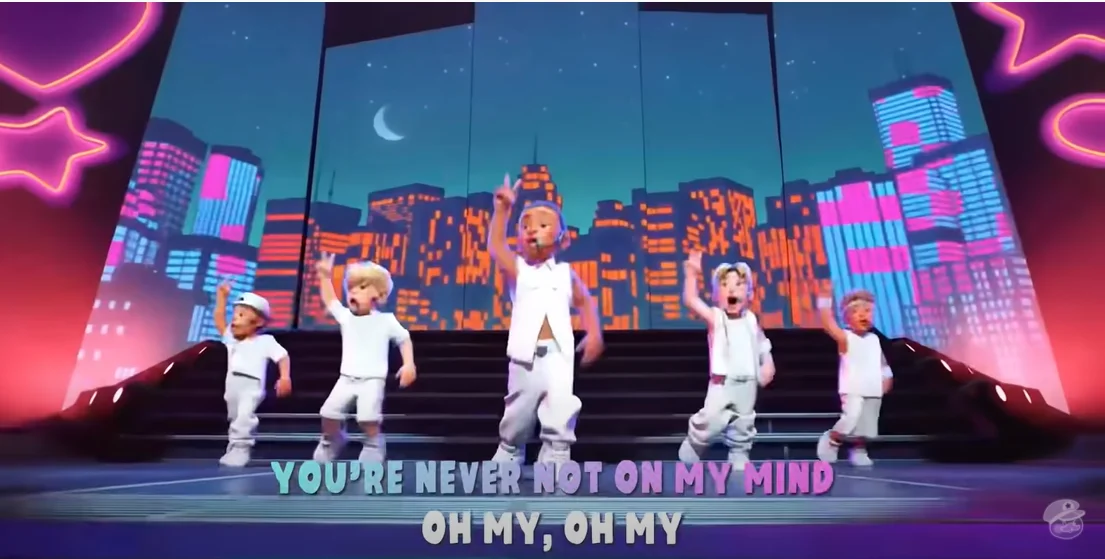
But as time passed, the women in the family kept a close eye on it, thinking that suppressing the “panda” was the right choice.
The movie explained several times that “Red Panda” only appeared when he was emotional, so it was a bad thing and difficult to control.
It can be seen that the changes in people’s attitudes towards “red pandas” are closely related to the “misogyny” tradition in patriarchal culture.
The so-called “red panda” not only symbolizes female power, but also represents people’s fear of it. Fortunately, with the encouragement of friends, Meilin gradually accepted his body and decided to give up the ritual and live with his “red panda”.
At the end of the film, Meilin reconciles with her mother. It turns out that her mother also had a rebellious side and fought against her grandmother in order to marry her father.
In Sun Yee’s fantasy, Meilin found Girls’ Generation’s mother, and they finally formed a female community.
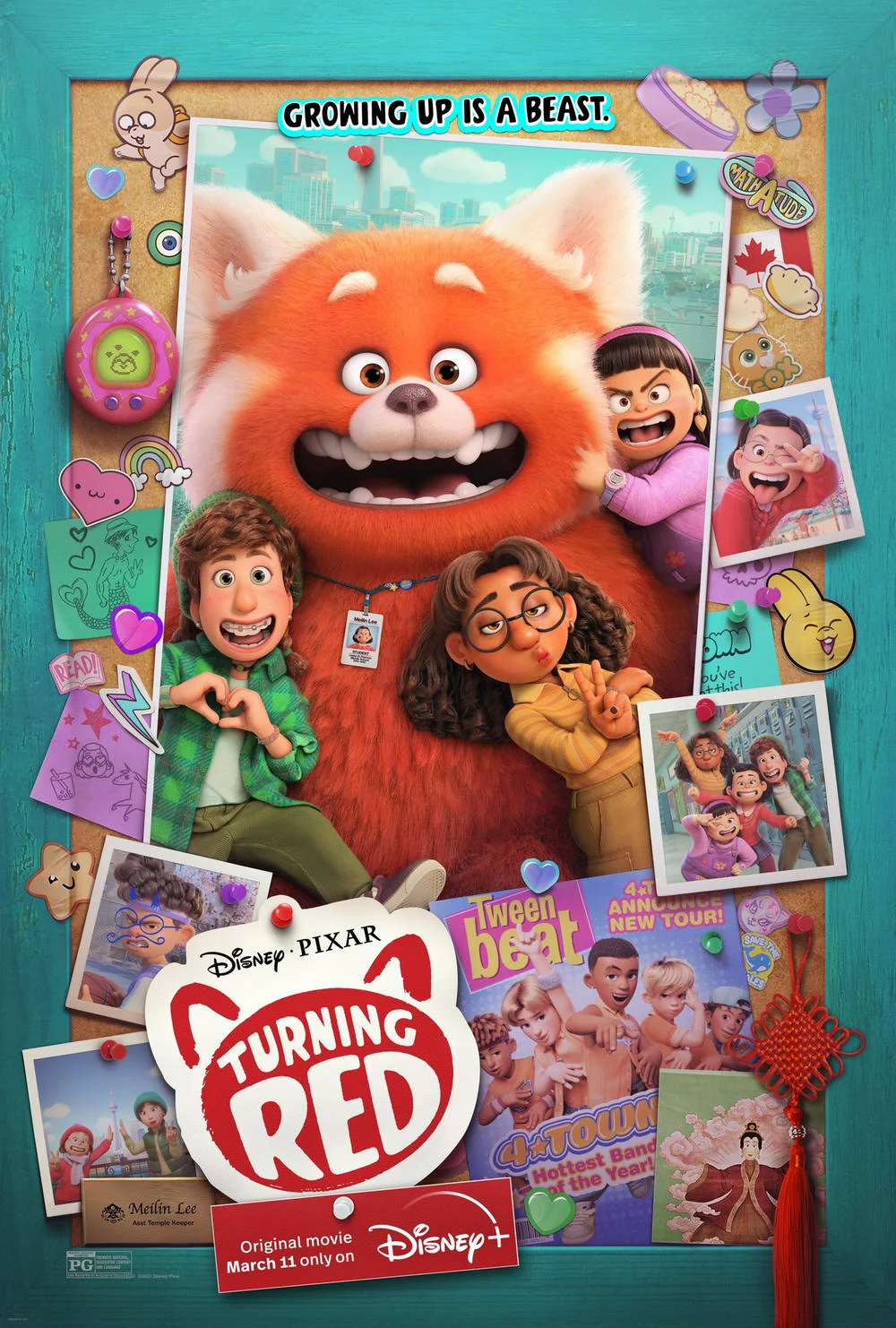
Meilin has shown her family that she has great control and demonstrated the acceptance of a new generation of women.
The collision of Eastern and Western cultures
Meilin’s Chinese identity is another point of view that cannot be ignored in this film. The film delicately shows how Meilin establishes self-identity in a cross-cultural environment.
At first, Meilin was very inferior to her changes and wanted to avoid everyone. It was three good friends who accepted her and gave her the courage to return to campus.
What Meilin didn’t expect was that when the secret that she could become a “red panda” was leaked, she became a popular figure on campus.
Compared with the perfect schoolmaster, teenage boys and girls prefer a huge cute bear.
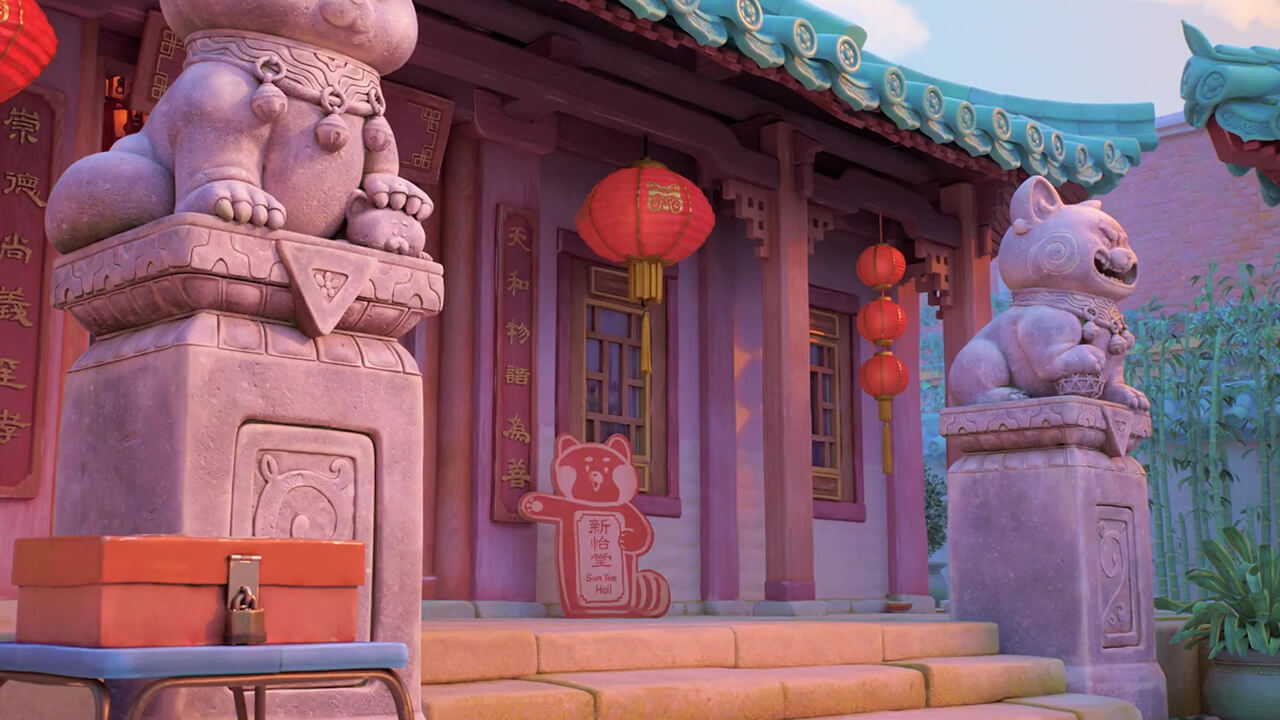
Not only that, Meilin took advantage of its own advantages to develop a series of “red pandas”-related “peripheries” to sell to classmates, and raised the cost of purchasing concert tickets in a very short period of time.
In just one week, Meilin has gone from being ashamed of his body to being confident, and has also begun to embrace the “business civilization” that represents the West.
In fact, it was the multiculturalism of the immigrant city of Toronto that made Meilin’s “alienation” understood and loved by everyone, and made her feel proud of her cultural heritage.
Although this setting can be said to be an artificially created “utopia”, it also provides a warm solution when dealing with contradictions and differences in the collision of Eastern and Western cultures.
In addition, family relationships are clearly a “motif” explored by director Domee Shi.
Her previous work “Bao” told the story of a Chinese mother who chose to swallow her buns when she found out that her baby was about to leave her.

Meilin grew up with a Western-style education. At the same time, she also recognizes the culture of her own nation and is willing to dedicate her spare time to the family temple.
But it was painful for her grandmother and mother to ask Meilin to live her life exactly as she wanted.
At the beginning of the film, she set up a desire to “be yourself”, and at the end, she completed her rebellion against the previous generation and truly grew up.
“Turning Red” conveys a simple and universal value with the help of cute images, and tries to deeply explore the human feelings and ethics of Chinese people.
Simple as it is, it is a comforting allegory for the post-“globalization” era. It tells us that the barriers of identity can finally be dissolved by understanding and love.
Related Post: “Turning Red”: youthful throbbing, unsealable maiden power.


